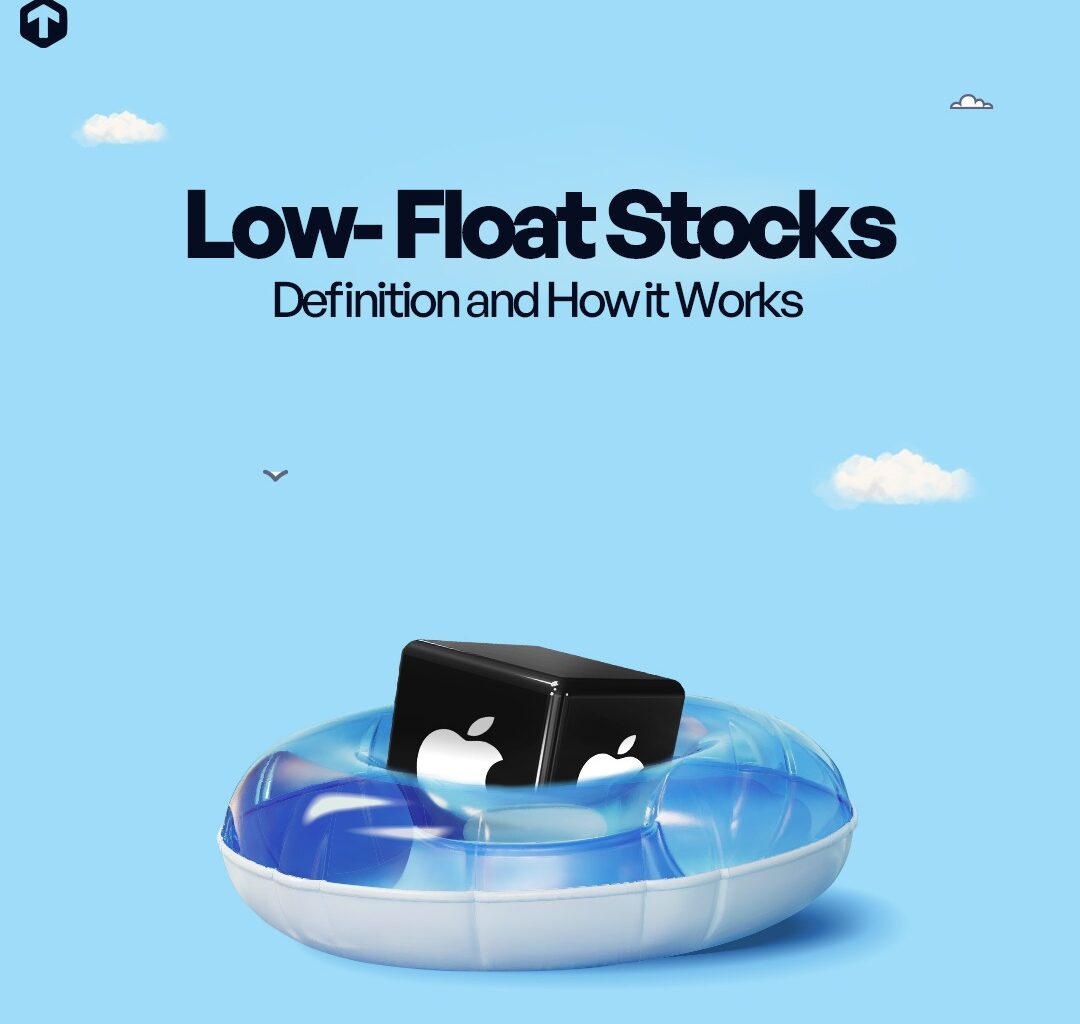What does low float mean stock mean?
You’re probably wondering, and I know it’s one of many questions you may have about stocks.
Anyway, the term ‘float’ refers to the number of shares of a company’s stock that are available for public trading. Low-float stocks, are relatively small number of shares available for trading in the stock market.
This can have a big impact on a stock’s price, making low-float stocks more volatile than stocks with a higher float. While low-float stocks can offer potential opportunities for profit, they also come with their own set of risks.
In this post, we will look at the basics of low-float stocks and factors that can influence them. But first, let’s understand what floating stock means before we dive into low-float stock.

What is Float in Stocks?
A floating stock is the number of shares of a company that is available for trading on the open market. To calculate the float, you subtract the company’s closely held shares (those held by insiders like executives and employees) from the total number of outstanding shares. The float is important because it tells investors how much of the company is owned by the public and how much is available for trading.
What is Low-float Stock?
This is a type of stock that has a relatively small number of shares available for trading in the public market. A low-float stock can be more volatile than a stock with a higher float because there are fewer shares to go around. This means that even small changes in demand can have a big impact on the price of the stock. Low float stocks are often associated with smaller companies, penny stocks, or IPOs.
Characteristics of Low-float Stocks
- Limited Number of Outstanding Shares: The defining characteristic of low-float stocks is their scarcity in the market. With fewer shares available, these low-float stocks can experience significant price movements with relatively small trades.
- Impact on Stock Price Volatility: The restricted availability of shares can lead to heightened volatility. Small buy or sell orders may cause substantial price fluctuations, making low-float stocks attractive to traders seeking rapid movements.
- Potential for Rapid Price Movements: Due to the limited supply of shares, low-float stocks have the potential for rapid and substantial price swings. This characteristic attracts both seasoned day traders and speculative investors.
Factors Influencing Low-float Stocks
- Initial Public Offerings (IPOs): The release of a company’s shares to the public through an IPO can contribute to low-float stocks. As these stocks enter the market, the available float is limited, impacting their trading dynamics.
- Company Buybacks: When a company repurchases its own shares, it reduces the float in the market. This reduction can result in increased volatility and a more favourable environment for short-term traders.
- Insider Trading: Insider transactions, where company executives buy or sell shares, can affect the float. If insiders are actively trading, it can influence the availability of shares for public trading.
Pros and Cons of Investing in Low Float Stocks
Pros of Investing in Low Float Stocks
- Potential for High Returns: Since there is a small number of shares, any increase in demand can eventually result in sharp price movements. So, if you’re able to catch the wave, the potential returns could be much higher than those from large-cap stocks.
- Short-term Opportunities: Low-float stocks are volatile and can provide you with short-term trading opportunities. In case, you don’t want to invest for so long, this could be a great opportunity.
- Undervalued Companies: Some low-float stocks represent small or emerging companies that haven’t yet caught the attention of mainstream investors. If you’ve done your research, you might be able to identify a stock that’s undervalued and has substantial growth potential.
Cons of Low Float Stock Investing
- High Volatility: The same volatility that creates the possibility for huge returns can also open the door to significant losses. Low-float stocks can swing wildly, and those price movements aren’t always based on solid fundamentals. A stock that climbs 70% in a day could just as easily fall 800% the next.
- Liquidity Issues: Low float stocks have less liquidity, making it harder to buy or sell large amounts of stock without affecting the price. This means when you’re trying to sell quickly, there might not be enough buyers, to buy the stocks leaving you stuck with shares you can’t offload easily.
- Prone to Manipulation: Some low float stocks are targeted for manipulation by “pump and dump” schemes. These occur when individuals or groups artificially inflate the stock price to draw in unsuspecting investors, only to sell their shares at the peak, leaving new investors holding the bag when prices tumble.
Key Factors to Consider Before Investing in Low-float Stocks
1. The Company’s Fundamentals
Knowing more about the company’s financial health is a crucial aspect you need to carefully look into before investing your money into any company. It’s easy to get caught up in the excitement of a stock with a limited float, but you must not overlook the company’s financial health and growth prospects.
Analyze the low-float company’s earnings reports, balance sheet, and industry position. Are they profitable? Do they have a clear path for growth? A strong company will have a solid foundation, even if its stock is volatile.
2. Market Trends
Pay attention to the overall market sentiment surrounding the stock. Are there news or information driving its price up or down? It could be positive or negative.
Positive news about a new product or business deal can spike the product’s demand, but bad news or uncertainty can plummet the price. You should always stay informed to capitalize on these moments.
3. Trading Volume
Low-float stocks can become illiquid during low trading volume periods. This makes it difficult to exit positions if the stock moves against you. Always ensure that the stock has a healthy trading volume, allowing you to quickly buy or sell without impacting the price too much.
4. Set a Risk Tolerance Level
It’s not advisable to invest in any company’s stock without knowing your risk tolerance. How much are you willing to lose if things go south? I recommend setting stop-loss orders, which will automatically sell your shares if the price drops to a certain level. This can help minimize losses in the event of sudden, sharp declines.
How to Start Investing in Low Float Stocks
1. Use Stock Screeners
Start by using stock screeners to identify potential low-float stocks. Many platforms allow you to filter stocks by float size, daily volume, market cap, and other criteria. Tools like Yahoo Finance are great for this.
2. Stay Up-to-Date with News
Keep an eye on any news related to the company or industry. Positive or negative headlines can cause the stock to surge or plummet, and in the world of low-float stocks, those movements can be extreme. Being informed will give you the upper hand. You subscribe to TomifromTrove weekly newsletter or stay updated on platforms like; CNBC, Yahoo Finance, etc
3. Start Small
It’s tempting to go all-in once you find an attractive low-float stock, but I advise starting small. Low-float stocks are inherently risky, and it’s better to test the waters with smaller investments before committing a large portion of your portfolio.
Read: Stock Market Terms and Definitions for Beginners

Conclusion
While low-float stocks can present opportunities for quick profits, they can also be risky investments. Before investing in a low-float stock, it is important to research the company and understand the risks involved. Be sure to consider the company’s financials, market conditions, and any potential red flags. If you do your homework and are willing to accept the risks, investing in a low-float stock can be a good way to potentially generate returns.
Do you want to invest in any Nigerian or foreign stock of your choice, visit our website or download the Trove app on your mobile phone



